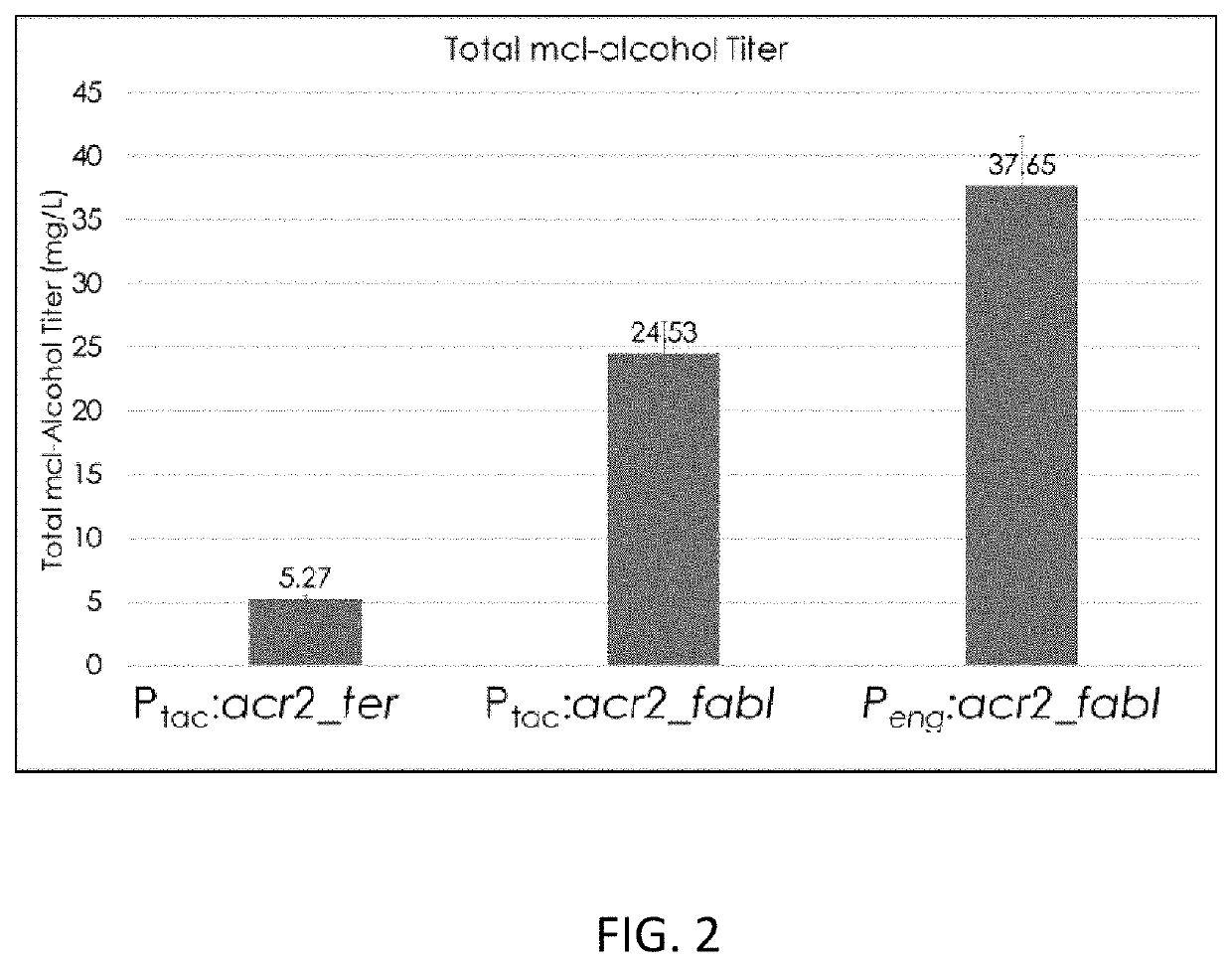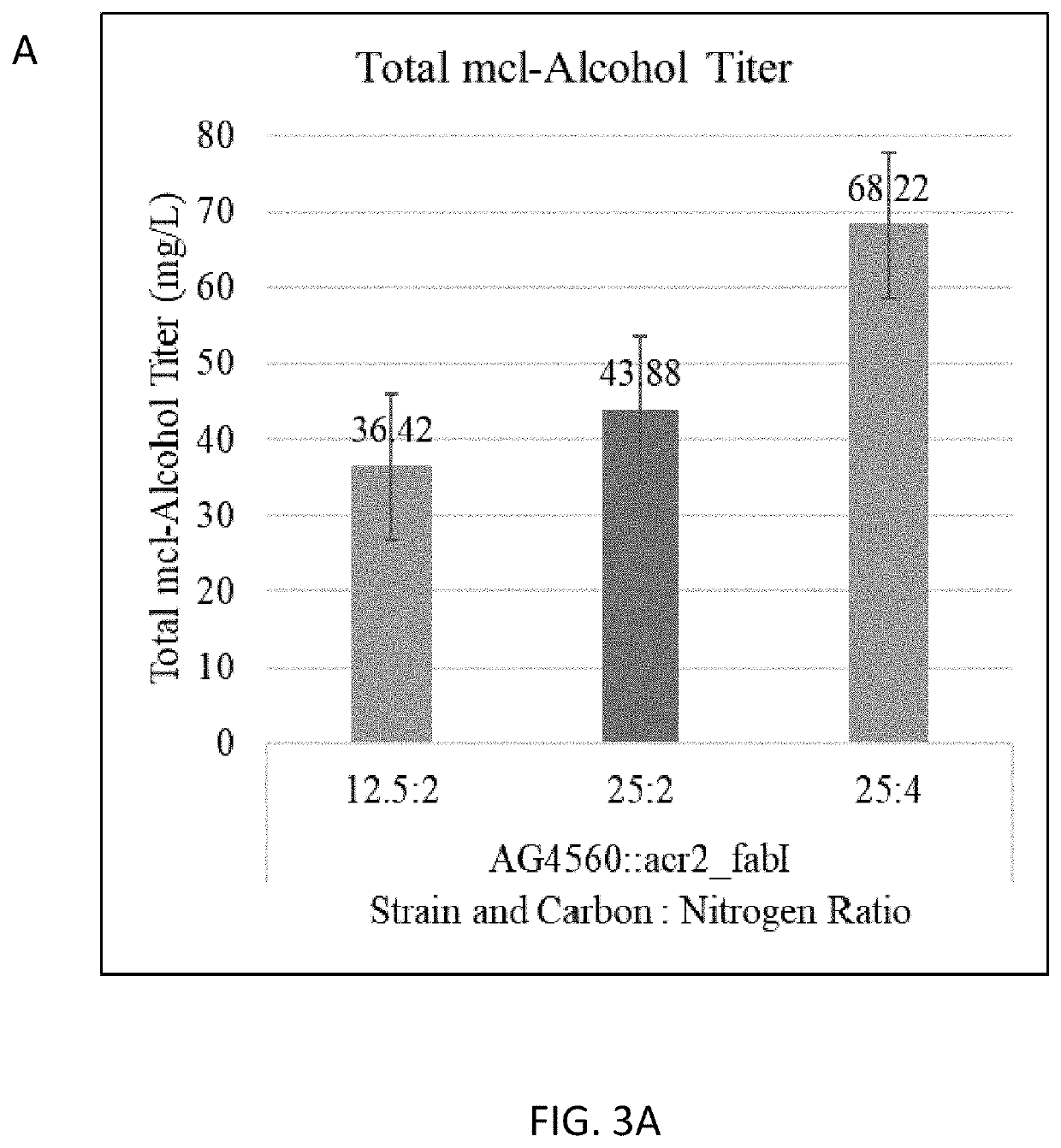Engineered microbes for conversion of organic compounds to medium chain length alcohols and methods of use
a technology of organic compounds and microorganisms, which is applied in the field of engineered microorganisms for the conversion of organic compounds, can solve the problems of inability to use lignocellulosic residuals (i.e., lignins) constituting about 30% of the total biomass content, and currently underutilized resources
- Summary
- Abstract
- Description
- Claims
- Application Information
AI Technical Summary
Benefits of technology
Problems solved by technology
Method used
Image
Examples
example 2
he Genetically-Engineered Bacteria
[0065]Initial pathway evaluation was carried out using the σ70 based tac promoter, which produced total mcl-alcohol up to titers of approximately 25 mg / L (FIG. 2). This represents the first demonstration of mcl-alcohol production from lignin derived substrates.
[0066]The tac promoter is not expressed well in the nitrogen limited conditions used for mcl-alcohol production, so the inventors evaluated mcl-alcohol production pathway expression with several engineered promoters that express in both growth phase and N-limitation conditions. The best performing engineered promoter was able to increase total mcl-alcohol titers by more than 50%, to a titer of 37.6 mg / L (FIG. 2).
example 3
trogen Ratio Affects Alcohol Production Yield
[0067]To further investigate the production capacity of the engineered strains, the inventors evaluated multiple culturing conditions. Established methods to produce mcl-PHAs in P. putida utilized p-coumaric acid as the carbon source and NH4 as the nitrogen source in an M9 minimal media. These compounds are usually set at concentrations of 12.5 mM p-coumaric acid and 2 mM NH4.
[0068]The inventors altered these conditions to double the concentrations of both carbon and nitrogen along with conditions where only the carbon concentration was doubled. When the carbon concentration alone was doubled, the total mcl-alcohol titer increased by 20% and approximately 12% of the carbon supplied remained in the media after 48 hours. In the double carbon and nitrogen conditions, our strain was able to approximately double the total titer of mcl-alcohols to 68 mg / L and consume nearly all the carbon (FIGS. 3A-3B). This data suggests that the carbon loadin...
PUM
| Property | Measurement | Unit |
|---|---|---|
| chain length | aaaaa | aaaaa |
| breakdown | aaaaa | aaaaa |
| chemical complexity | aaaaa | aaaaa |
Abstract
Description
Claims
Application Information
 Login to View More
Login to View More - R&D
- Intellectual Property
- Life Sciences
- Materials
- Tech Scout
- Unparalleled Data Quality
- Higher Quality Content
- 60% Fewer Hallucinations
Browse by: Latest US Patents, China's latest patents, Technical Efficacy Thesaurus, Application Domain, Technology Topic, Popular Technical Reports.
© 2025 PatSnap. All rights reserved.Legal|Privacy policy|Modern Slavery Act Transparency Statement|Sitemap|About US| Contact US: help@patsnap.com



